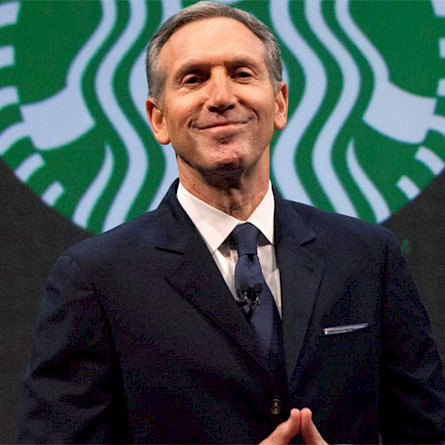During the first quarter of fiscal 2022, which ended on January 2, 2022, the company repurchased more than $3.5 billion of its own shares. In the press release announcing Mr. Shultz’s return, he said “This decision will allow us to invest more into our people and our stores — the only way to create long-term value for all stakeholders.” Like many other North American companies, Starbucks has had difficulty finding staff for some time. In addition, it is facing a unionization movement by some of its employees.
During a forum with company employees at its headquarters last Monday, Mr. Shultz said “I am not in business, as a shareholder of Starbucks, to make every single decision based on the stock price for the quarter.” He says the company needs to grow faster and improve the in-store experience to be more relevant to consumers, even if that could reduce quarterly earnings and short-term shareholder returns.
Mr. Shultz is a major shareholder of Starbucks, a stock we own in some of our portfolios under management. The last time he declared his shareholding of the company, in June 2020, he owned 34.7 million (directly and indirectly), which represents 3.0% of the shares of the company and a value of almost $2.9 billion at the stock’s recent price. Clearly, Mr. Shultz has a vested interest in seeing the company and its stock continue to grow over the long term.
It is quite typical: an owner thinks differently than a simple manager. In addition to the fact that he founded the company 50 years ago, owning some 34.7 million shares, in my opinion, encourages Mr. Shultz to make the necessary decisions for the long-term benefit of the company.
Most of the time, such decisions are costly in the short term. For example, the decision to invest more in R&D reduces a company’s profits in the short term, but it could significantly increase its growth and profitability in the longer term.
I also have in mind the example of Amerco, which we have held in some of our portfolios for many years and whose business is better known by its main division, U-Haul. Mr. Edward Shoen, company president, owns nearly 8.4 million shares, or 42.7% of the total, which are worth more than $4.6 billion. However, Mr. Shoen made the decision several years ago to invest heavily in a new service for his customers, self-storage services for individuals, a decision that weighed on the company’s profitability for several years, before starting to contribute significantly to its growth over the past two years.
The decision to halt share buybacks and invest more in its stores could have the same impacts for Starbucks. It’s always hard to predict things like this, but I think you can be sure that a leader like Mr. Shultz, who has a proven track record and a strong motivation to create shareholder value, will make the decisions that he believes will be the most beneficial to shareholders in the long term.





